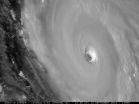(Press-News.org) The ocean is an increasingly industrialized space. Shipping, fishing, and recreational vessels, oil and gas exploration and other human activities all increase noise levels in the ocean and make it more difficult for marine mammals to hear and potentially diminish their range of hearing.
"Hearing is the main way marine mammals find their way around the ocean," said Aran Mooney, a biologist at Woods Hole Oceanographic Institution (WHOI). It's important to know whether and to what extent human activity is negatively impacting them.
But how can we get marine mammals living in the wild to tell us what they're able to hear?
"Same way we do it with human infants," said Mooney. "You play a sound, then you measure the brain's response to the sound."
Though Mooney makes it sound easy enough, he and his colleagues are the first to publish a study of hearing in wild marine mammals, with multiple marine mammals. The paper, "Baseline Hearing Abilities and Variability in Wild Beluga Whales (Delphinapterus leucas)" was published today in the Journal of Experimental Biology, on May 14.
In addition to Mooney, the research team included the paper's lead author Manuel Castellote, from the Alaska Fisheries Science Center, which is part of the National Marine Fisheries Service, and the North Gulf Oceanic Society, and their colleagues from Alaska Department of Fish and Game, Alaska SeaLife Center, and the Georgia Aquarium.
The researchers worked over a two week period in southwest Alaska during the summer of 2012, capturing and testing seven Bristol Bay beluga whales, one of six subpopulations of beluga whales in the U.S. Enabling this study are recent advances in portable field testing equipment, rugged enough for field work. To conduct their hearing tests, the team temporarily maintained the individual animals as part of physical health exams. They used suction cups to attach a small speaker to its jaw—which in whales and dolphins conducts sound to both ears—and placed sensors on the animal's head and back.
"The advantage is that it's really fast," said Mooney. "You can get one of these data points in about two or three minutes. A whole hearing range takes about half an hour."
In human populations, there is variability in our hearing ability: older people don't hear as well as younger people; males don't hear high frequencies as well as females. But in the tested beluga population, there was surprisingly little variation.
"The bottom line is they all hear pretty well," said Mooney. "Limitations to our study were that we had just seven animals who live in a pretty quiet environment without a lot of noise exposure. These might conserve their high-frequency better than humans, which makes sense; they need it for echolocation, and if they lose that, then they could lose of their abilities to find food and communicate."
That this kind of study has never been reported before is an indication of the challenge of capturing and testing wild marine mammals.
"It's a bit of a project. It takes a lot of people and the right environment. But we've also shown that if you have the right setup it's easy to do," said Mooney.
The team used three or four small inflatable boats and worked with Alaskan natives expert in spotting belugas, which have no dorsal fin and make only the smallest of ripples at the surface when they breathe. The guide the beluga into shallow water – shallow enough to stand in -- until they can gently capture the 8- 12-foot animals with a hoop and net.
"Then the animal won't try and swim away, once they feel contained, they're not going to fight," said Mooney. "They will hang out there. Then you put a belly band stretcher underneath them which has little holes for the flippers. Then it goes over the belly, and that holds the animal during the test."
The team caught and measure three females and four males and essentially gave them all physicals. In addition to the hearing test, they did ultrasounds on each of the animals and collected saliva or mucous from the blow hole to look for stress hormones and took a core of the blubber to look for PCBs and other organic compounds that may build up in the fats. Together, the data gives researchers a baseline of the animals' health and a way to measure change in the population's health over time and as environmental conditions change.
While hearing in the tested animals was good, the researchers note that human-caused ocean noise is believed to be a chronic stressor and has been identified as a threat to other populations of belugas. The increase in human activities in Arctic ecosystems as a result of sea ice loss is creating a special concern about increasing ocean noise in the Arctic and its potential impacts on whales and dolphins. They note that "expanding our knowledge of beluga hearing is key to an appropriate conservation management effort."
Another driver for understanding their health and hearing now is a proposed mineral exploration and mining project in the area. The Pebble Mine project would exploit large deposits of copper, gold and molybdenum in the region. "It's not clear if it will directly affect the hearing of the belugas, but it will affect the ecology of what's up there, so the baseline health information is key," said Mooney.
The results of this hearing study may also help validate studies of hearing in belugas in captivity .
The team hopes to return to the field this summer to test a larger number of animals and attach temporary data-logging tags to learn more about their foraging, diving, and social behaviors.
INFORMATION:
Funding for the project came from the Georgia Aquarium and the National Marine Mammal Laboratory of the Alaska Fisheries Science Center (NMML/AFSC). Field work also supported by National Marine Fisheries Service Alaska Regional Office (NMFS AKR), WHOI Arctic Research Initiative, WHOI Ocean Life Institute, U.S. Fish and Wildlife Service, Bristol Bay Native Association, Alaska Sea Life Center, Shedd Aquarium and Mystic Aquarium and the Office of Naval Research.
The Woods Hole Oceanographic Institution is a private, non-profit organization on Cape Cod, Mass., dedicated to marine research, engineering, and higher education. Established in 1930 on a recommendation from the National Academy of Sciences, its primary mission is to understand the ocean and its interaction with the Earth as a whole, and to communicate a basic understanding of the ocean's role in the changing global environment. For more information, please visit http://www.whoi.edu.
Scientists test hearing in Bristol Bay beluga whale population
First published study on hearing in wild cetaceans
2014-05-14
ELSE PRESS RELEASES FROM THIS DATE:
Snubbing lion hunters could preserve the endangered animals
2014-05-14
For hundreds of years young men from some ethnic groups in Tanzania,
called "lion dancers" because they elaborately acted out their lion
killing for spectators, were richly rewarded for killing lions that
preyed on livestock and people. Now when a lion dancer shows up he
might be called a rude name rather than receive a reward, according
to a new UC Davis study.
Some villagers are snubbing the lion killers, calling them "fakers"
and contemplating punishing them and those who continue to reward
them, said Monique Borgerhoff Mulder, anthropology professor at UC
Davis. ...
Deconstructing goal-oriented movement
2014-05-14
Our human brains are filled with maps: visual maps of our external environments, and motor maps that define how we interact physically within those environments. Somehow these separate points of reference need to correspond with — and to — one another in order for us to act, whether it's grasping a coffee cup or hitting a tennis ball.
How that happens is the focus of a new study by scientists at UC Santa Barbara. The researchers used neuroimaging to decode how the brain transforms sensory input into action. Their findings are reported in the Journal of Neuroscience. ...
Virtual pet leads to increase physical activity for kids, UGA research says
2014-05-14
Athens, Ga. – Placing children into a mixed reality—part virtual environment and part real world—has great potential for increasing their physical activity and decreasing their risk of obesity, according to University of Georgia researchers.
Sixty-one Georgia 4-H'ers, 9-12 years old, participated in a study designed to increase awareness and reduce childhood obesity. Participants set goals for the amount of physical activity they wanted to complete throughout the day over a course of three days. An activity monitor was worn to track their activity.
Children were split ...
Study shows tropical cyclone intensity shifting poleward
2014-05-14
MADISON, Wis. — The latitude at which tropical cyclones reach their greatest intensity is gradually shifting from the tropics toward the poles at rates of about 33 to 39 miles per decade, according to a study published today (May 14, 2014) in the journal Nature.
The new study was led by Jim Kossin, a National Oceanic and Atmospheric Administration (NOAA) National Climatic Data Center scientist stationed at the University of Wisconsin-Madison's Cooperative Institute for Meteorological Satellite Studies. The research documents a poleward migration of storm intensity in ...
NIH takes action on sex/gender in cell and animal studies
2014-05-14
What:
NIH leadership is available to answer questions from reporters about new policies that will be published online Wednesday in Nature to ensure that sex is treated as a fundamental variable in the preclinical biomedical research that it funds.
Article: NIH takes action on sex/gender in cell and animal studies. Nature. Clayton, J.A. & Collins, F.S.. Published online May 14, 2014.
Spokesperson:
Janine Austin Clayton, M.D., NIH Associate Director for Research on Women's Health, Director for the NIH Office of Research on Women's Health
INFORMATION:
Contact: To ...
Study: Dangerous storms peaking further north, south than in past
2014-05-14
Powerful, destructive tropical cyclones are now reaching their peak intensity farther from the equator and closer to the poles, according to a new study co-authored by an MIT scientist.
The results of the study, published today in the journal Nature, show that over the last 30 years, tropical cyclones — also known as hurricanes or typhoons — are moving poleward at a rate of about 33 miles per decade in the Northern Hemisphere and 38 miles per decade in the Southern Hemisphere.
"The absolute value of the latitudes at which these storms reach their maximum intensity seems ...
Possible new plan of attack for opening and closing the blood-brain barrier
2014-05-14
Like a bouncer at an exclusive nightclub, the blood-brain barrier allows only select molecules to pass from the bloodstream into the fluid that bathes the brain. Vital nutrients get in; toxins and pathogens are blocked. The barrier also ensures that waste products are filtered out of the brain and whisked away.
The blood-brain barrier helps maintain the delicate environment that allows the human brain to thrive. There's just one problem: The barrier is so discerning, it won't let medicines pass through. Researchers haven't been able to coax it to open up because they ...
Tropical cyclone 'maximum intensity' is shifting toward poles
2014-05-14
Over the past 30 years, the location where tropical cyclones reach maximum intensity has been shifting toward the poles in both the northern and southern hemispheres at a rate of about 35 miles, or one-half a degree of latitude, per decade according to a new study, The Poleward Migration of the Location of Tropical Cyclone Maximum Intensity, published tomorrow in Nature.
As tropical cyclones move into higher latitudes, some regions closer to the equator may experience reduced risk, while coastal populations and infrastructure poleward of the tropics may experience increased ...
Researchers discover how DHA omega-3 fatty acid reaches the brain
2014-05-14
It is widely believed that DHA (docosahexaenoic acid) is good for your brain, but how it is absorbed by the brain has been unknown. That is - until now. Researchers from Duke-NUS Graduate Medical School Singapore (Duke-NUS) have conducted a new study identifying that the transporter protein Mfsd2a carries DHA to the brain. Their findings have widespread implications for how DHA functions in human nutrition.
People know that DHA is an essential dietary nutrient that they can get from seafood and marine oils. Baby formula companies are especially attuned to the benefits ...
California mountains rise as groundwater depleted in state's Central Valley
2014-05-14
Winter rains and summer groundwater pumping in California's Central Valley make the Sierra Nevada and Coast Ranges sink and rise by a few millimeters each year, creating stress on the state's earthquake faults that could increase the risk of a quake.
Gradual depletion of the Central Valley aquifer because of groundwater pumping also raises these mountain ranges by a similar amount each year – about the thickness of a dime – with a cumulative rise over the past 150 years of up to 15 centimeters (6 inches), according to calculations by a team of geophysicists.
While the ...
LAST 30 PRESS RELEASES:
Heart-brain connection: international study reveals the role of the vagus nerve in keeping the heart young
Researchers identify Rb1 as a predictive biomarker for a new therapeutic strategy in some breast cancers
Survey reveals ethical gaps slowing AI adoption in pediatric surgery
Stimulant ADHD medications work differently than thought
AI overestimates how smart people are, according to HSE economists
HSE researchers create genome-wide map of quadruplexes
Scientists boost cell "powerhouses" to burn more calories
Automatic label checking: The missing step in making reliable medical AI
Low daily alcohol intake linked to 50% heightened mouth cancer risk in India
American Meteorological Society announces Rick Spinrad as 2026 President-Elect
Biomass-based carbon capture spotlighted in newly released global climate webinar recording
Illuminating invisible nano pollutants: advanced bioimaging tracks the full journey of emerging nanoscale contaminants in living systems
How does age affect recovery from spinal cord injury?
Novel AI tool offers prognosis for patients with head and neck cancer
Fathers’ microplastic exposure tied to their children’s metabolic problems
Research validates laboratory model for studying high-grade serous ovarian cancer
SIR 2026 delivers transformative breakthroughs in minimally invasive medicine to improve patient care
Stem Cell Reports most downloaded papers of 2025 highlight the breadth and impact of stem cell research
Oxford-led study estimates NHS spends around 3% of its primary and secondary care budget on the health impacts of heat and cold in England
A researcher’s long quest leads to a smart composite breakthrough
Urban wild bees act as “microbial sensors” of city health.
New study finds where you live affects recovery after a hip fracture
Forecasting the impact of fully automated vehicle adoption on US road traffic injuries
Alcohol-related hospitalizations from 2016 to 2022
Semaglutide and hospitalizations in patients with obesity and established cardiovascular disease
Researchers ‘listen in’ to embryo-mother interactions during implantation using a culture system replicating the womb lining
How changing your diet could help save the world
How to make AI truly scalable and reliable for real-time traffic assignment?
Beyond fragmented markets: A new framework for efficient and stable ride-pooling
Can shape priors make road perception more reliable for autonomous driving?
[Press-News.org] Scientists test hearing in Bristol Bay beluga whale populationFirst published study on hearing in wild cetaceans




